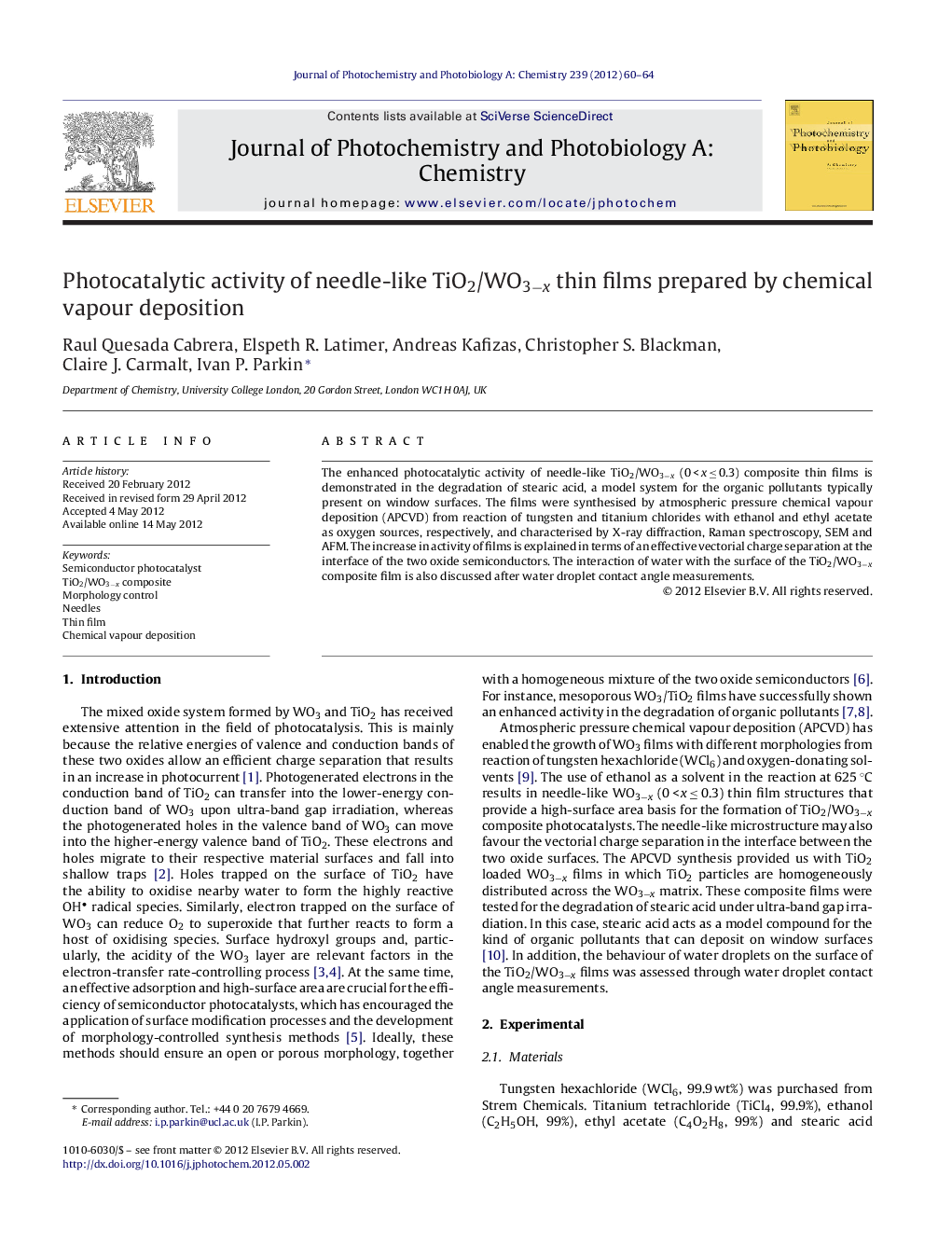| Article ID | Journal | Published Year | Pages | File Type |
|---|---|---|---|---|
| 27131 | Journal of Photochemistry and Photobiology A: Chemistry | 2012 | 5 Pages |
The enhanced photocatalytic activity of needle-like TiO2/WO3−x (0 < x ≤ 0.3) composite thin films is demonstrated in the degradation of stearic acid, a model system for the organic pollutants typically present on window surfaces. The films were synthesised by atmospheric pressure chemical vapour deposition (APCVD) from reaction of tungsten and titanium chlorides with ethanol and ethyl acetate as oxygen sources, respectively, and characterised by X-ray diffraction, Raman spectroscopy, SEM and AFM. The increase in activity of films is explained in terms of an effective vectorial charge separation at the interface of the two oxide semiconductors. The interaction of water with the surface of the TiO2/WO3−x composite film is also discussed after water droplet contact angle measurements.
Graphical abstractThe enhanced photocatalytic activity of needle-like TiO2/WO3−x (0 < x ≤ 0.3) composite thin films is demonstrated in the degradation of stearic acid, a model system for the organic pollutants typically present on window surfaces. The films were synthesised by atmospheric pressure chemical vapour deposition from reaction of tungsten and titanium chlorides with ethanol or ethyl acetate oxygen sources, respectively, and characterised by X-ray diffraction, Raman spectroscopy, SEM and AFM. The increase in activity of films is explained in terms of an effective vectorial charge separation at the interface of the two oxide semiconductors. The interaction of water with the surface of the TiO2/WO3−x composite film is also discussed after water droplet contact angle measurements.Figure optionsDownload full-size imageDownload as PowerPoint slideHighlights► Morphology-controlled synthesis of thin-film TiO2/WO3−x composite by atmospheric-pressure chemical vapour deposition (APCVD). ► The composite film is proven to be more efficient than its individual components for stearic acid degradation under UVA and UVC lights. ► The enhancement of activity is explained in terms of a more efficient vectorial charge separation.
